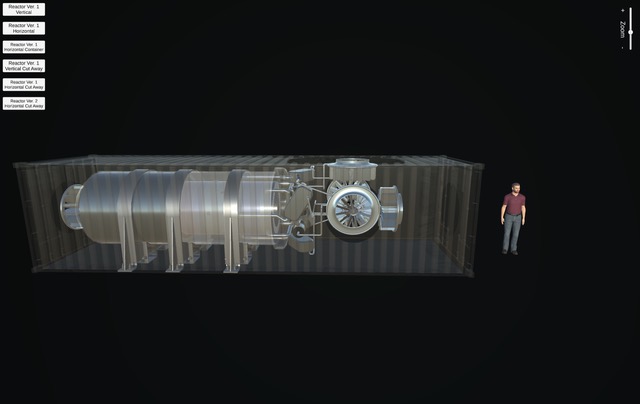Build Small Nuclear Reactors for Battlefield Power
Los Alamos engineers are working on a tiny, steel-encased core regulated by physics, not pumps.
There’s not much the U.S. military does that’s more dangerous than trucking fuel through a war zone. In 2009, the Army found that one soldier died for every 24 fuel convoys in Afghanistan. So if a better way could be found to generate electricity at remote bases — that’s what most of the fuel is used for — it could greatly reduce the risks to our military.
A solution could be a new micro-nuclear reactor being developed by Los Alamos National Laboratory and the Westinghouse power company. Built around heat-pipe technology, this inherently safe microreactor has no cooling water or pumps that can fail, uses passive regulation systems so that it cannot melt down, and can generate at least 1 megawatt of safe, reliable power for 10 years or more. A megawatt is enough electricity for roughly a military brigade, some 1,500 to 4,000 soldiers.
Most importantly, it’s small. The reactor core itself is about the size of the garbage can that you roll down to your curb each week. The entire microreactor system will fit on the back of a semi-truck or on a small ship. It’s small enough to bring to remote areas and islands, greatly reducing the need to send fuel convoys and troops into harm’s way.
We’re using technologies that have existed for decades, so they are proven safe and reliable. But previously there was no way to integrate those technologies together into a functioning system. Now, we are able use advanced manufacturing technologies and computational tools to build a new generation of safe, small, and simple transportable power systems.
This new microreactor sprang from Los Alamos’ work to develop a small nuclear reactor for NASA that might someday power a colony on Mars or the Moon. Called Kilopower, the Mars reactor is about the size of a roll-aboard suitcase and provides 1 to 10 kilowatts of electric power. A key feature is self-regulation: the Kilopower reactor relies on inherent physics phenomena to naturally regulate its power output to meet power needs. Passive heat pipes drive multiple engines to generate electricity. Testing at the National Criticality Experiments Research Center at the Nevada National Security Site demonstrated a smaller version of the entire system.

Naturally, we wondered how could we use this same technology for Earth-bound purposes. The microreactor is our answer. It could be used on its own or easily coupled to other sources of energy—including renewables—whose output varies considerably during a day.
How it works
In our microreactor, the nuclear fuel is low-enriched, non-weapons-grade uranium. The fuel is encapsulated in a solid steel monolith to form a sub-critical nuclear core, which is surrounded by a neutron reflector and contains a simple shut-down rod that allows the core to go critical on demand. The thermal energy created by the fission reactions is efficiently removed from the metal core by high-temperature, alkali-metal heat pipes, a technology in wide use both on earth and in space since the 1970s. Thermal energy is converted into electrical energy—and power is delivered.
The initial concept for the microreactor was developed using Laboratory Directed Research and Development funds. NASA is funding development of the Kilopower space reactor, while Westinghouse and the Energy Department's Office of Technology Transitions and ARPA-E are funding initial steps to scale up the Kilopower design to a terrestrial microreactor.
Once deployed, the microreactor system could be in place, connected, and generating power within 72 hours of arrival. The reactor system can be shut down, cooled, disconnected, and wheeled out in less than seven days. The reactor core and all other critical equipment are housed in a special armor, which protects the reactor systems from attack and also shields personnel and environment from the core radiation during operation and transport. The basic design is mature and has been demonstrated on a small scale. By working with an experienced nuclear vendor like Westinghouse to design, build, and test these units, a near-term solution to remote power for the military can be quickly realized.
In addition to military bases, disaster areas could greatly benefit. When a natural disaster such as a hurricane or earthquake strikes, one of the first things disrupted is the power supply. In 2017, Hurricane Maria left more than half of Puerto Rico’s 1.5 million residents without power for months; it took nearly a year before power was fully restored. With the increased frequency of extreme weather events, more widespread power outages are expected—leaving governments to look for ways to provide power quickly and affordably.
In less than five years, these microreactors could be ready for deployment. We anticipate positive results from the outset—with more power being safely brought to hard-to-reach locations, and reminding us that good things—in fact, lifesaving things—do, indeed, come in small packages.